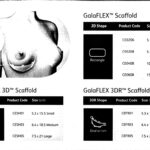BIA-ALCL, is a type of lymphoma, which can develop in the breast implant capsule. It is most frequently associated with textured breasts implants. It is an immune system type of cancer.
According to the American Society of Plastic Surgeons, currently the lifetime risk of BIA-ALCL is estimated at 1:2,207-1:86,029. The current quoted incidence of BIA-ALCL in the Uk is quoted at 1:16,500.
The symptoms associated with the BIA-ALCL, include breasts size increase, pain, visible breasts asymmetry, lump in breast or arm-pit (axilla), rash in the breast skin, hardening of the breast, and large amount of fluid.
The symptoms present more than one year after augmentation and on average present 8-10 years following the surgery. The recommendation that any patient experiencing these symptoms should see their General Practioner or their operating surgeon.
BIA-ALCL is not exclusive to silicone breast implants. However, it is seen in both silicone and saline breast implants and affect both breast cancer patient who underwent breast reconstruction with implants and cosmetic surgery patients. In the case of smooth surface breast implants there does not seem to be currently reported cases of BIA-ALCL.
If you are concerned that you have the symptoms, we recommend you make an appointment to see your GP or operating surgeon. Based on the history you present with, and the clinical examination further investigations may be necessary. These will include breasts ultrasound and/or MRI looking at the breasts, breast implants and the lymph nodes in your arm pits (axilla).
If fluid or mass are found in the breast this will be aspirated or in the case of a mass a tissue biopsy is obtained. In the United Kingdom these usually are carried out in collaboration with an experienced breast radiologist in the private sector or in your local NHS oncoplastic breast unit. The fluid and or breast tissue will undergo special immune-histochemical staining specific to detecting BIA-ALCL.
In the very unlikely event, you are diagnosed with BIA-ALCL, the management of this condition is multidisciplinary and involves a team rather just an individual. In newly diagnosed BIA-ALCL, the patient is also seen by an oncologist for evaluation of the condition, staging and treatment plan. In addition, any newly diagnosed case of BIA-ALCL, should be discussed at a Breast MDT and Haematology MDT and must be reported to the MHRA. Currently in the UK the Cosmetic Implant Registry (BIR), also affords opportunities for registering cases of BIA-ALC.
If the BIA-ALCL is only around the breast implant surgery is performed to remove the breast implant and the scar capsule around it (capsulectomy). If the lymph nodes in the axilla are involved, then testing with needle biopsy or surgery to remove them may be performed. However, this management plan may be different between centers and is evolving with time.
In some patients who may present with more advanced disease, they may require further treatment including chemotherapy and in rare cases radiotherapy and/or stem cell transplant therapy.
Follow up after treatment, will include regular checkup visits for two years following the removal of the disease. Further investigations may include PET or CT scans for staging, at 3-6 monthly intervals, however, these plans may differ between countries and centers worldwide.
It is important to put matters into perspective when thinking about undergoing breast implants surgery, including breast enlargement, breast uplift (mastopexy) with implants or any other breast implants-based surgery, that the estimated incidence of BIA-ALCL is significantly lower than the incidence of breast cancer in a female aged 40 or above. This risk of breast cancer in a female is 1:8 in the UK.
Current position in the UK on BIA-ALCL based on PRASEAG advising MHRA is not to ban breasts implants as the risk of BIA-ALCL is low when compared to breast cancer. The patient must have choice and be fully informed to make the right choice. In addition, alternative to breast implants in some patients may not always be possible.
It is important to stress the information associated with BIA-ALCL and breast implants is in continuous flux of change. Hence, the link provided below is for the latest update on this condition.










